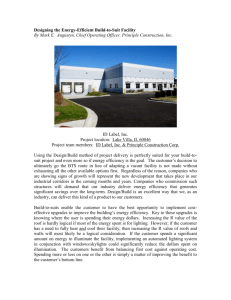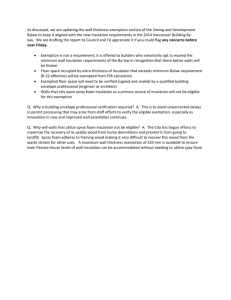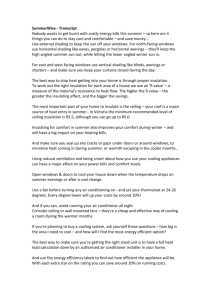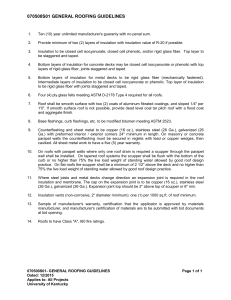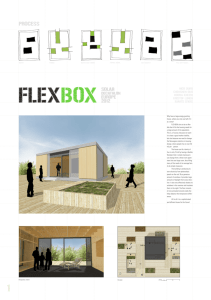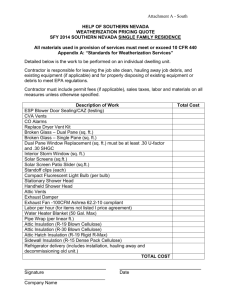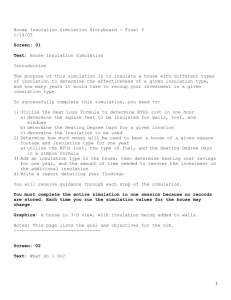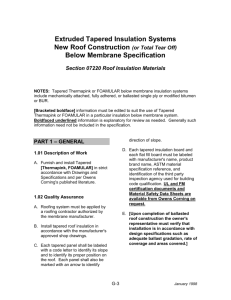Project 1
advertisement
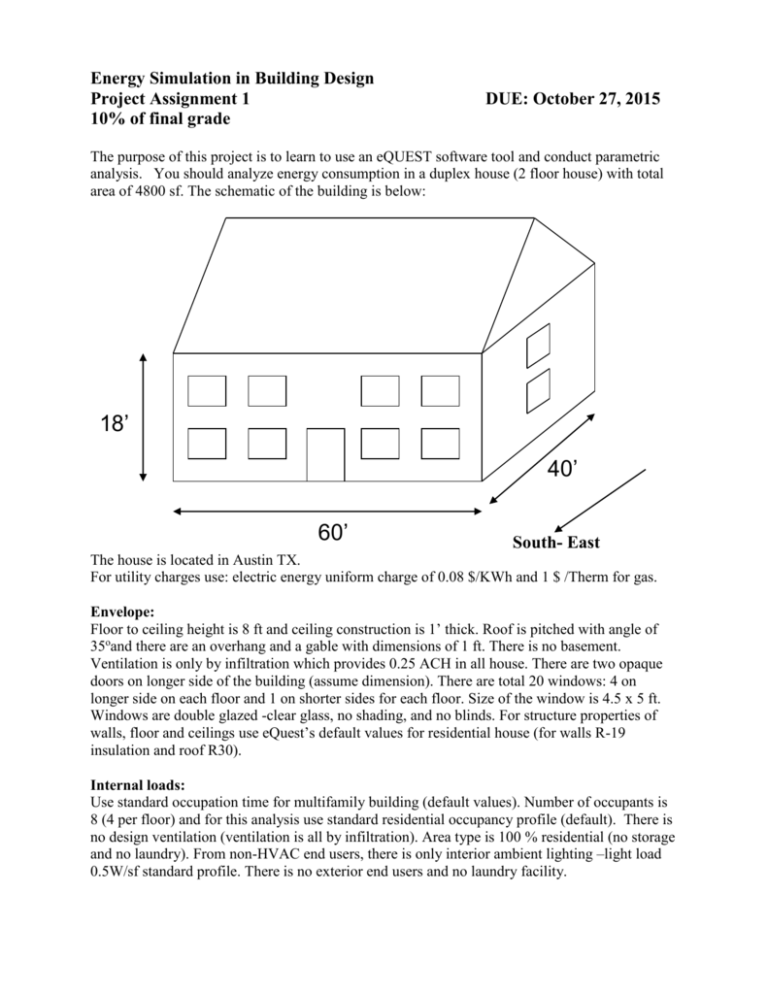
Energy Simulation in Building Design Project Assignment 1 10% of final grade DUE: October 27, 2015 The purpose of this project is to learn to use an eQUEST software tool and conduct parametric analysis. You should analyze energy consumption in a duplex house (2 floor house) with total area of 4800 sf. The schematic of the building is below: 18’ 40’ 60’ South- East The house is located in Austin TX. For utility charges use: electric energy uniform charge of 0.08 $/KWh and 1 $ /Therm for gas. Envelope: Floor to ceiling height is 8 ft and ceiling construction is 1’ thick. Roof is pitched with angle of 35oand there are an overhang and a gable with dimensions of 1 ft. There is no basement. Ventilation is only by infiltration which provides 0.25 ACH in all house. There are two opaque doors on longer side of the building (assume dimension). There are total 20 windows: 4 on longer side on each floor and 1 on shorter sides for each floor. Size of the window is 4.5 x 5 ft. Windows are double glazed -clear glass, no shading, and no blinds. For structure properties of walls, floor and ceilings use eQuest’s default values for residential house (for walls R-19 insulation and roof R30). Internal loads: Use standard occupation time for multifamily building (default values). Number of occupants is 8 (4 per floor) and for this analysis use standard residential occupancy profile (default). There is no design ventilation (ventilation is all by infiltration). Area type is 100 % residential (no storage and no laundry). From non-HVAC end users, there is only interior ambient lighting –light load 0.5W/sf standard profile. There is no exterior end users and no laundry facility. HVAC system There are two air-conditioning units –one for each floor. For booth floors use Direct Expansion (DX) cooling system. For heating purposes use gas furnace. HVAC Systems are two (one for each floor) packaged single zone DX with furnace. There is no crankcase heating. Return air is direct. There is one thermal zone per floor and each HVAC system serves one zone. Use standard thermostat set-point temperatures, supply temperatures and airflow. Auto-size HVAC equipment and use standard efficiency and pressure drop in the AHU’s fans. The fans’ work is intermittent. For all undefined values use logical assumptions (pay attention to the internal heat sources). Document all assumptions. Part a: Build the energy simulation model in eQUEST software and calculate the annual energy consumption for north-south orientation and east-west orientation. Use standard output result form for annual consumption of gas and electric energy and cost ($). Part b: Use energy efficiency measure wizard to conduct the parametric analysis for four parameters which characterize the energy flow through the building envelope. Analyze: Window shading: - No shading (default case used in part ”a”) - Horizontal shading on south windows - Vertical shading on east and west windows Glass type: - Double glazed –clear (default glazing used in part ”a”) - Single glazed - clear - Double glazed, low-E and, Tinted (reflective) glasses Exterior wall insulation: - Case with standard (R-19 for the external walls and R30 for the roof) insulation (this is a default insulation for use in part ”a”) - Two additional cases with different insulation level Case with heavy insulation R-21 for walls and R--45 for the roof) Case with low insulation R-6 for walls and R-13 for the roof). Exterior wall color (effect of with short-wave radiation absorption): - for the case of house with low insulation =0.6 (medium color - default value) =0.45 (light) - for the case of house with heavy insulation =0.6 (medium color - default value) =0.45. Comment the results of parametric analyses (2- 3 paragraphs): Considering the basic configuration (part a) and improvements in: 1) windows properties, 2) insulation and 3) surface color, define the most efficient measure for improvement of building envelope. Using your knowledge about heat transfer phenomena in buildings elements explain your answer. Comment the effect of color on energy consumption in case with insulation and no insulation. Part c: Model the ETC building (building across the ECJ building). Use your assumptions for the input variables you don’t know (or ask during the class). Document all assumptions Calculate the annual consumption of gas and electric energy and cost ($). Propose the measures that will cut the operation cost for 15%. Justify this measures and saving by energy modeling. Part d: Switch your eQUEST model of the ETC building (the basic one, with no saving) into detail modeling mode. Using detail modeling, calculate the shading effect of identical surrounding buildings (see Figure below) on the energy consumption in your building. (Provide the change of energy consumption whit and without surrounding buildings.) 60 ft Side 2 60 ft Your Side building 1 For the cases whit and without surrounding buildings, calculate the change of the total soar radiation on the external surfaces on side 1 and 2 of your building (see Figure above). Compare this result with the change in energy consumption and comment the results (1 paragraph). Grading (total 100 points): - Model geometry (part a) - Accuracy of input data for system properties (part a) - Assumptions for undefined values (part a) - Parametric analysis (part b) - Model, assumptions, and results in part c - Modeling and comments of results in part d Hard copies of results and analysis are required. 10% 10% 10% 30% 30% 20%


